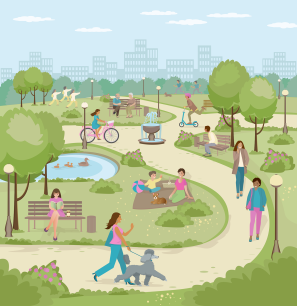The impact of the COVID-19 pandemic on the use of and attitudes towards urban forests and green spaces

This paper starts with the premise that the use of urban forests and green spaces - where and for who they were available and accessible - increased, when social restrictions were most stringent during the Covid lockdown. It analyses the responses to a survey of 1987 respondents in Belgium and statistically examines the relationship between sociodemographic characteristics, urbanisation characteristics, actual and intended green space use, and changes in attitudes towards green spaces and civic engagement. Being part of the 2030 Biodiversity Strategy of the EU (European Commission (EC), 2020), Urban Green Spaces (UGS) contribute to both mitigation and adaptation of climate change, support biodiversity conservation, and are key for ensuring and maintaining physical and mental health and human wellbeing. The 2020 and 2021 economic and societal lockdowns have been associated with physical and mental health risks to those confined to their homes or home offices. Among others, Google Maps data showed an impressive increase of mobility to places like national parks, public beaches, marinas, dog parks, plazas, and public gardens, amidst a general fall in mobility trends. Access to UGS is however unevenly distributed, particularly in urban areas, and thus increases social and environmental injustice. Vulnerable groups tend to have less access to green spaces. This explorative paper questions to what extent increased use of UGS during the pandemic goes along with sociodemographic and spatial differences. It statistically examines the relationship between sociodemographics (gender, age, care giving responsibilities), (intended) green space use and changes in attitudes towards green spaces in terms of attraction (i.e., as the actual use behaviour), and civic engagement with UGS.